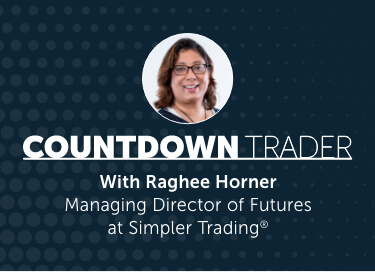A handful of common questions that I get are about what days I like to trade.
While there are some general guidelines, for example, I like to focus my trading on Monday through Thursday, and I’m very selective about Fridays. Friday is just inherently something that I call a caution day. Because it’s the end of each week and I’ll be a little bit more cautious about the follow-through.
In the same way that Friday is the end of each week, cautious days are also applicable at the end of the month, the very last trading day of the month, and the very last trading day of the quarter (as well as the very last trading day of the year). These are cautioned days because even though we have high probability setups, the way in which these setups will behave can be less probable.
They can be a little bit more volatile, which means…
They could be more unpredictable and therefore increases the chances that I could get stopped out.
There are several different types of days I refer to as caution days. Any economic event would qualify as a caution day. Days such as FOMC days, which are typically Wednesday at 2:00 PM. Non-farm payroll, which is Friday’s at 8:30 AM. What else would be a caution day?
Any day that the fed chair is speaking, any day that they’re speaking, that they’re giving a speech, that’s going to be a caution day. Those caution days are a little bit interesting. Here’s a tip — don’t be short going into the event. Typically that’s going to be for a 24-hour window. Don’t be short going into the event, however, oftentimes traders will short after a fed speech or even after a fed event, so it’s going to be a caution day.
Caution days are also options’ expiration Fridays, which is the third Friday of each month. And again, every one of these events increases the probability of volatility.
We know that with the volatility comes perhaps a little less adherence. There’s a little less trust that support levels, whether they’re volume-based, price-based, or some sort of technical level of volatility based, are going to hold. They are going to be broken, perhaps pierced in that infamous stop run, and then perhaps move in the direction that we thought.
That’s why we call it a caution day.
Caution days are not days that you shouldn’t be trading, but rather you need to be aware of the event and the historical reactions to such an event, so you can adapt to caution days. One way to adapt is by using options and reducing our size on the trade, or focusing on the very most conservative level within our entry zone. That’s what caution days are specifically, and that’s how we adapt for them.
So don’t be afraid to incorporate caution days into your trading.
It’s a risk management technique. It’s not about how much you can make when volatility is higher. Earnings would be another great example when specifically looking at the stock and the sector where that stock might be heavily weighted. Think about those events. Think about managing risk and incorporating those caution days into your approach.
I think you’ll be very happy that you did.



